EVGA 750 B3 PSU Review
Why you can trust Tom's Hardware
Transient Response Tests
Advanced Transient Response Tests
For details on our transient response testing, please click here.
Ιn these tests, we monitor the 750 B3's response in several scenarios. First, a transient load (10A at +12V, 5A at 5V, 5A at 3.3V, and 0.5A at 5VSB) is applied for 200ms as the PSU works at 20 percent load. In the second scenario, it's hit by the same transient load while operating at 50 percent load.
In the next sets of tests, we increase the transient load on the major rails with a new configuration: 15A at +12V, 6A at 5V, 6A at 3.3V, and 0.5A at 5VSB. We also increase the load-changing repetition rate from 5 Hz (200ms) to 50 Hz (20ms). Again, this runs with the PSU operating at 20 and 50 percent load.
The last tests are even tougher. Although we keep the same loads, the load-changing repetition rate rises to 1 KHz (1ms).
In all of the tests, we use an oscilloscope to measure the voltage drops caused by the transient load. The voltages should remain within the ATX specification's regulation limits.
These tests are crucial because they simulate the transient loads a PSU is likely to handle (such as booting a RAID array or an instant 100 percent load of CPU/GPUs). We call these "Advanced Transient Response Tests," and they are designed to be very tough to master, especially for a PSU with a capacity of less than 500W.
Advanced Transient Response at 20 Percent – 200ms
| Voltage | Before | After | Change | Pass/Fail |
|---|---|---|---|---|
| 12V | 12.120V | 12.002V | 0.97% | Pass |
| 5V | 5.042V | 4.928V | 2.26% | Pass |
| 3.3V | 3.314V | 3.131V | 5.52% | Fail |
| 5VSB | 5.043V | 4.941V | 2.02% | Pass |
Advanced Transient Response at 20 Percent – 20ms
| Voltage | Before | After | Change | Pass/Fail |
|---|---|---|---|---|
| 12V | 12.119V | 11.968V | 1.25% | Pass |
| 5V | 5.043V | 4.911V | 2.62% | Pass |
| 3.3V | 3.314V | 3.108V | 6.22% | Fail |
| 5VSB | 5.043V | 4.967V | 1.51% | Pass |
Advanced Transient Response at 20 Percent – 1ms
| Voltage | Before | After | Change | Pass/Fail |
|---|---|---|---|---|
| 12V | 12.120V | 11.953V | 1.38% | Pass |
| 5V | 5.042V | 4.964V | 1.55% | Pass |
| 3.3V | 3.314V | 3.117V | 5.94% | Fail |
| 5VSB | 5.043V | 4.967V | 1.51% | Pass |
Advanced Transient Response at 50 Percent – 200ms
| Voltage | Before | After | Change | Pass/Fail |
|---|---|---|---|---|
| 12V | 12.091V | 11.977V | 0.94% | Pass |
| 5V | 5.027V | 4.916V | 2.21% | Pass |
| 3.3V | 3.300V | 3.120V | 5.45% | Fail |
| 5VSB | 4.987V | 4.899V | 1.76% | Pass |
Advanced Transient Response at 50 Percent – 20ms
| Voltage | Before | After | Change | Pass/Fail |
|---|---|---|---|---|
| 12V | 12.091V | 11.930V | 1.33% | Pass |
| 5V | 5.027V | 4.892V | 2.69% | Pass |
| 3.3V | 3.300V | 3.104V | 5.94% | Fail |
| 5VSB | 4.987V | 4.920V | 1.34% | Pass |
Advanced Transient Response at 50 Percent – 1ms
| Voltage | Before | After | Change | Pass/Fail |
|---|---|---|---|---|
| 12V | 12.090V | 11.936V | 1.27% | Pass |
| 5V | 5.027V | 4.924V | 2.05% | Pass |
| 3.3V | 3.300V | 3.102V | 6.00% | Fail |
| 5VSB | 4.987V | 4.917V | 1.40% | Pass |


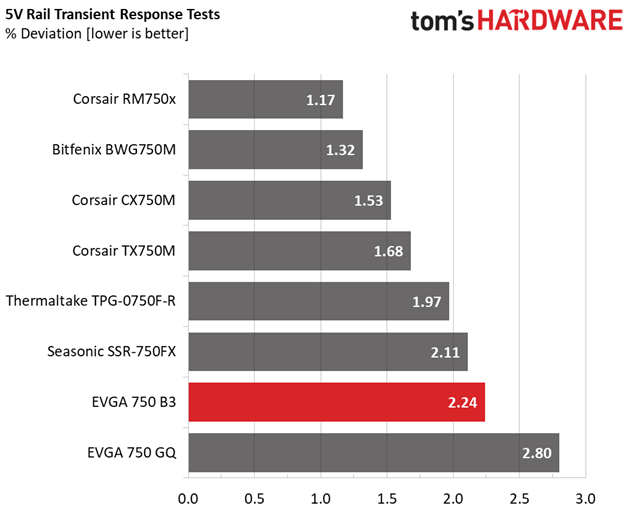


Transient response at +12V is satisfactory, while the 5V and 5VSB rails also kick out satisfactory results. On the other hand, EVGA's 3.3V rail performs poorly, failing all of our tests with very low voltage levels.
Get Tom's Hardware's best news and in-depth reviews, straight to your inbox.
Here are the oscilloscope screenshots we took during Advanced Transient Response Testing:
Transient Response At 20 Percent Load – 200ms


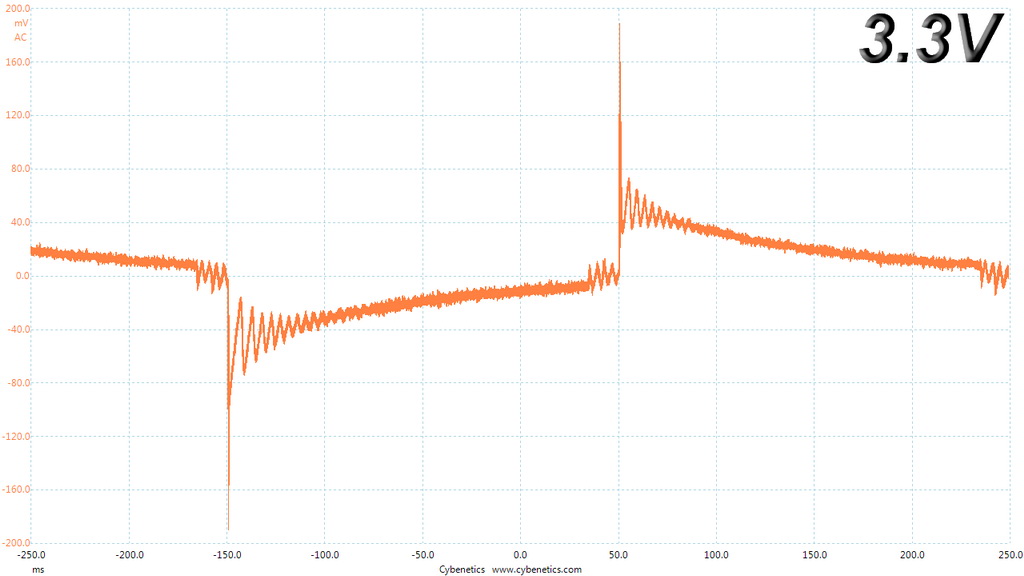

Transient Response At 20 Percent Load – 20ms

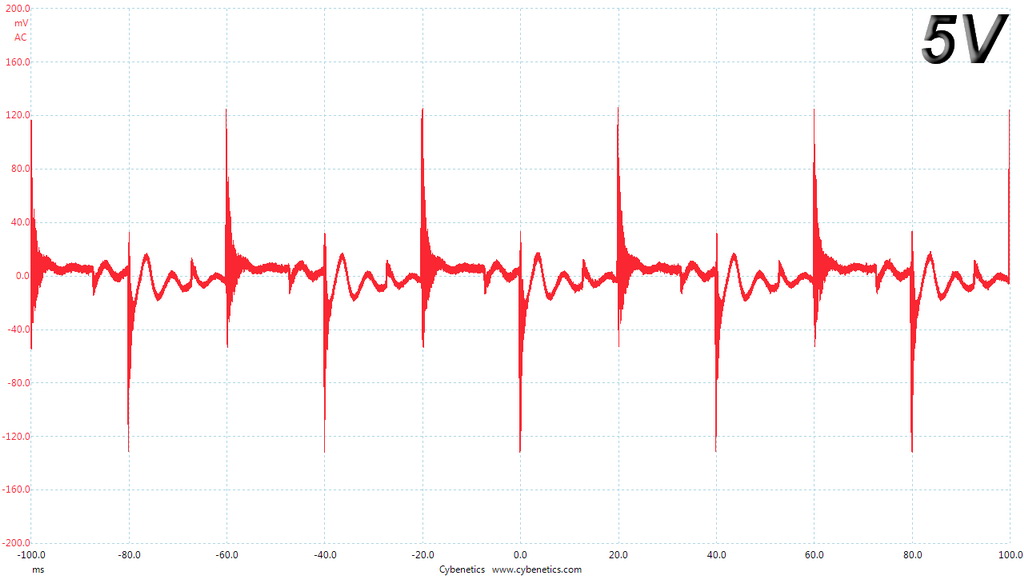


Transient Response At 20 Percent Load – 1ms

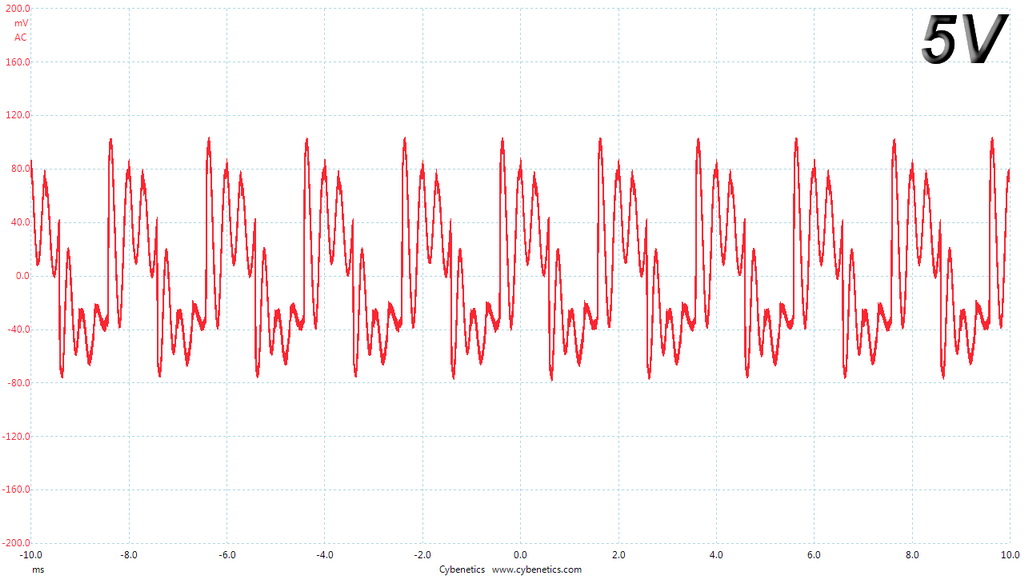


Transient Response At 50 Percent Load – 200ms




Transient Response At 50 Percent Load – 20ms




Transient Response At 50 Percent Load – 1ms
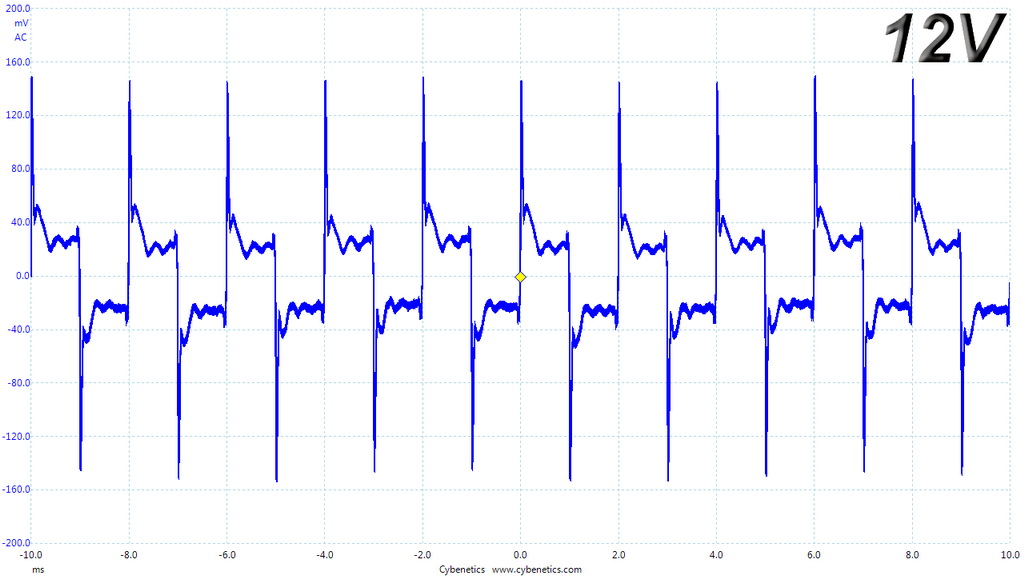
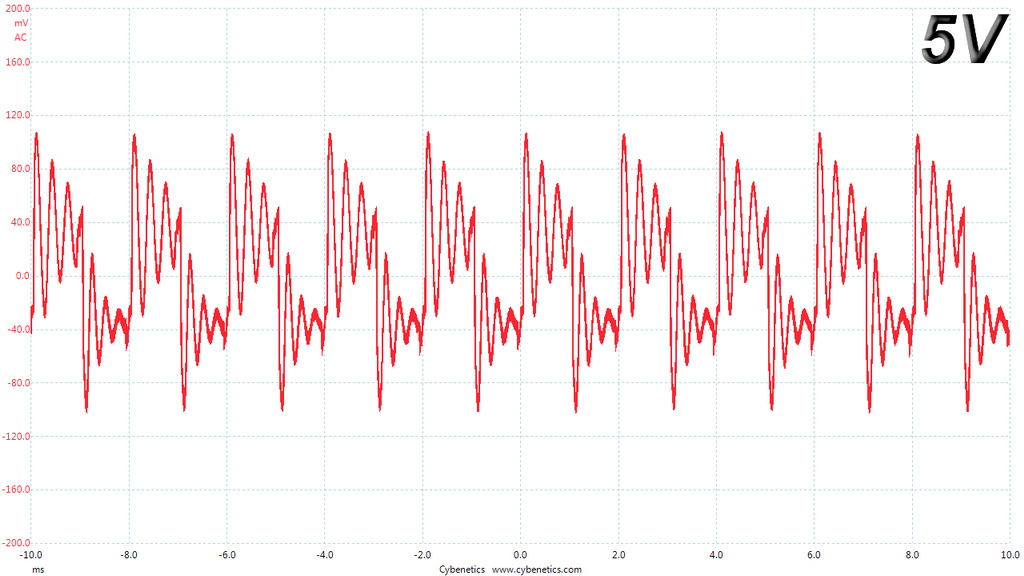

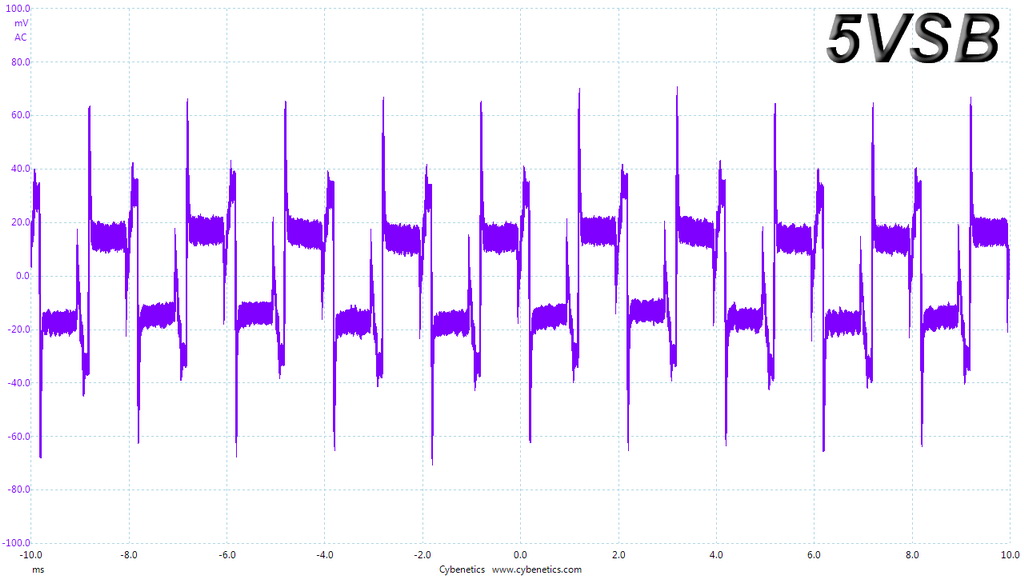
Turn-On Transient Tests
In the next set of tests, we measured the 750 B3's response in simpler transient load scenarios—during its power-on phase.
For our first measurement, we turned the 750 B3 off, dialed in the maximum current the 5VSB rail could output, and switched the PSU back on. In the second test, we dialed the maximum load the +12V rail could handle and started the 750W supply while it was in standby mode. In the last test, while the PSU was completely switched off (we cut off the power or switched the PSU off), we dialed the maximum load the +12V rail could handle before switching it back on from the loader and restoring power. The ATX specification states that recorded spikes on all rails should not exceed 10 percent of their nominal values (+10 percent for 12V is 13.2V, and 5.5 V for 5V).


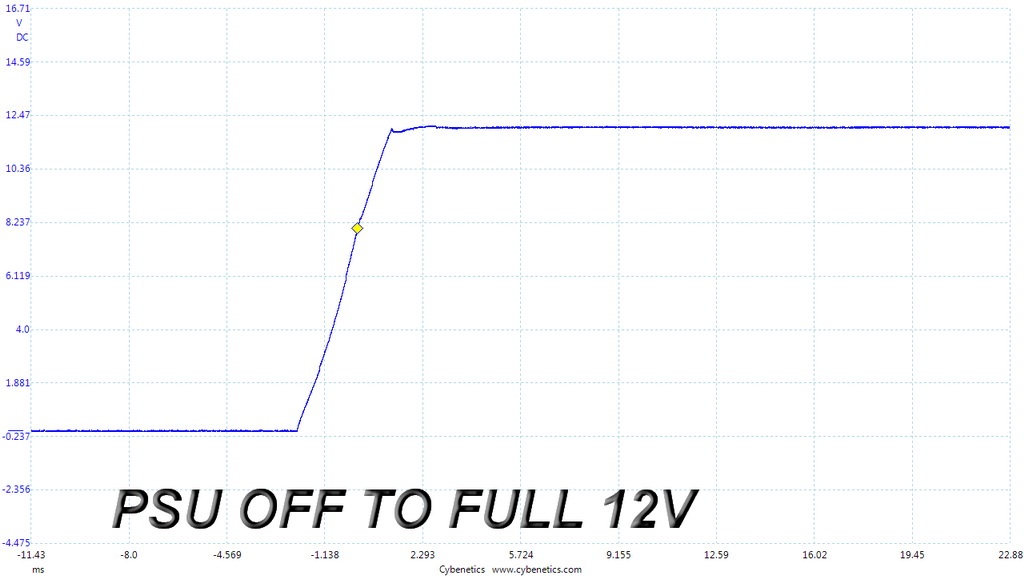
These waveforms ramp up smoothly, yielding good overall results.
MORE: Best Power Supplies
MORE: How We Test Power Supplies
MORE: All Power Supply Content
Current page: Transient Response Tests
Prev Page Cross-Load Tests & Infrared Images Next Page Ripple Measurements
Aris Mpitziopoulos is a contributing editor at Tom's Hardware, covering PSUs.
-
Dark Lord of Tech Several complaints in the forums from builders , very disappointed with the B3 series.Reply -
logainofhades Yea, I will no longer recommend a B3 series PSU. Seasonic and Corsair's new CX450m-650m are better options right now.Reply -
SinxarKnights The solder quality between review samples and retail samples is pretty shady in of itself IMO.Reply -
10tacle The fact that EVGA hasn't even responded to the 450W B3 fail test that was back in August is highly disturbing in an of itself. It is inexcusable to just ignore a tech website's inquiry (and serious concerns) as to why a series of their products are failing. I know EVGA's customer support is top notch in the industry (I've had to use it), but their public/customer relations team needs an overhaul. If I were the CEO, I'd be calling for some heads and light a fire under some backsides to ride Super Flower hard for a fix.Reply -
maxwellmelon with out them identifying the failed component how can they say that the PSU not turning back on after a OPP is not intentional setup because it being shut down at 120% of load is about right like they said. It could be designed that way as a safety feature. and a way to sell more psu because when you try to RMA it they can say you overloaded it and is not covered. Operating above 750 watts is above the psu limits and having a one time OPP shut down is still technically having OPP on it.Reply -
Aris_Mp When a PSU is broken after OPP's triggering, it is not a feature but a problem. OPP along with the rest of the protections is there to protect the PSU in order not to break when a user goes wild with it.Reply -
Lutfij The third paragraph of the last page reminded me of what cars with all souped up aftermarket parts but a crappy driver often results with - disaster.Reply
EVGA Have recently come under flack on other forums as well and their response isn't, erm, admirable. Nice work with the review, Aris, keep it up! -
rtansey378 They must be having issues in the CS department. After dealing with them for an RMA I found their website to be down totally twice and fundamentally broken in important other areas during RMA submission. I was getting different answers from different people to basic questions and there were unreturned emails that led to other issues - it was kind of a nightmare overall that went on for a month. Even after being expedited to a manager of some type it wasn't much better. And their 2-3 advance RMA uses UPS ground so it is not 2-3 days at all. It routinely takes them 3 days to get the replacement into UPS' hands and then UPS takes their sweet time. People also use their expensive desktop PCs for work. I went through that twice as they sent the wrong unit back the first time.Reply
They charge a premium largely on their CS reputation. I guess they are now hoping people won't have to use it and learn otherwise. Being branded as a good guy in the CS is huge. Being branded as a bad guy is a death sentence. You'd think they would at least return major website emails and spin use some good old corporate spin. They won't even do that. Makes you wonder.
I hope they figure it out. But Im no longer going to pay their premium. If they have the cheaper product then I would still consider them. That will rarely be the case. They did some nice patented stuff with their GTX 1070/1080 revisions so maybe they are putting all their eggs in that basket. -
mlee 2500 Wow, I expect better from something EVGA puts their name on.Reply
THANK YOU tom's HARDWARE for performing objective tests on multiple samples to keep us informed and the vendors honest....
I seriously could have seen myself buying my next PSU based on EVGA's reputation alone. I won't make that that mistake now.